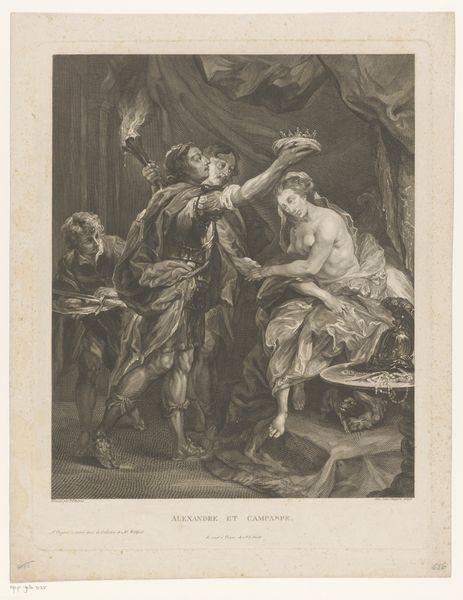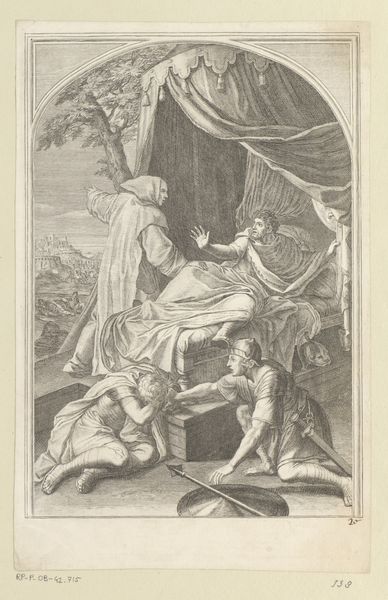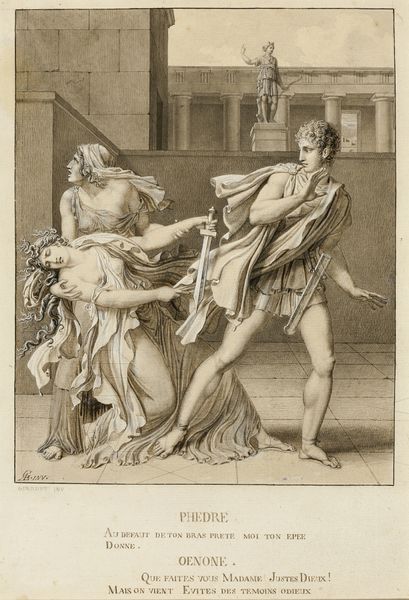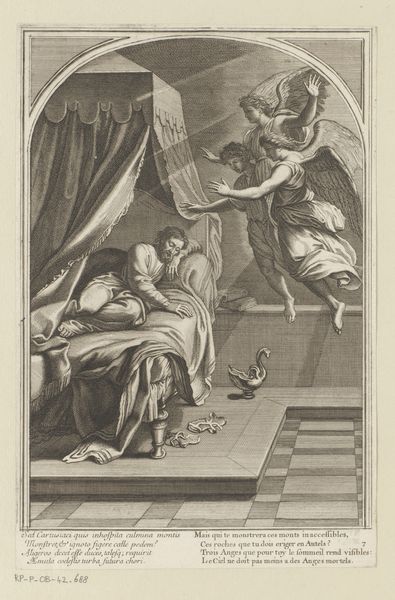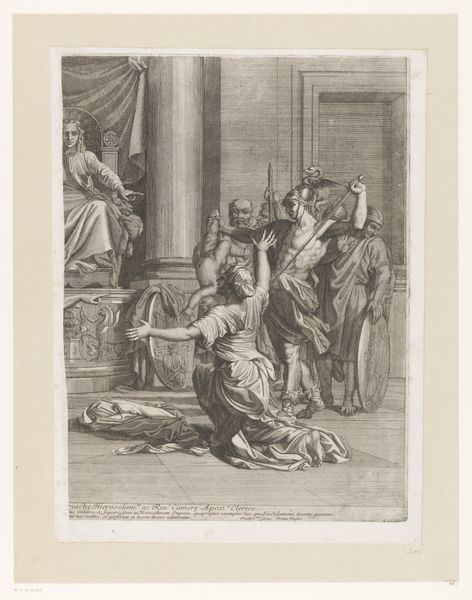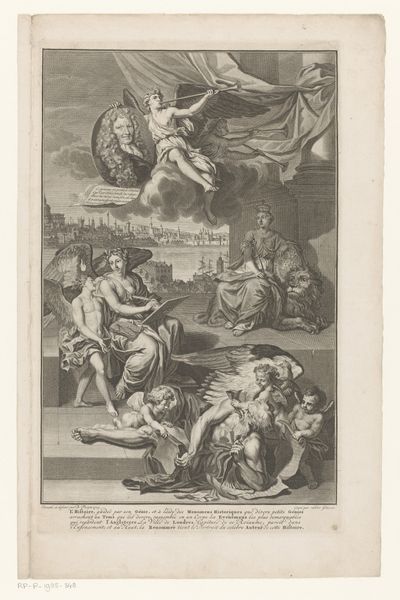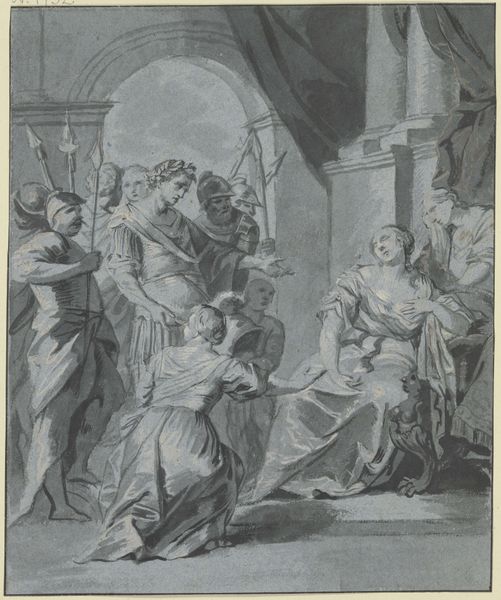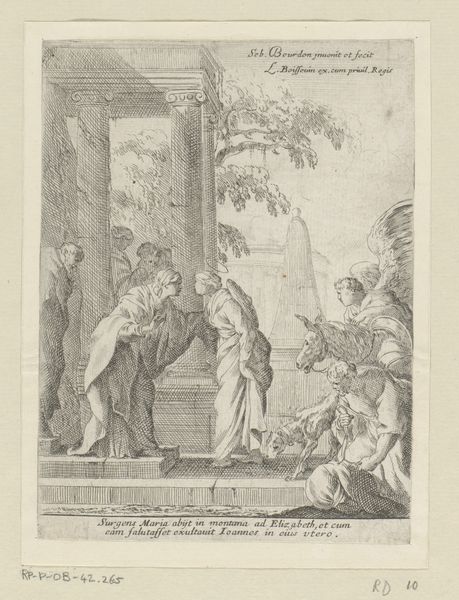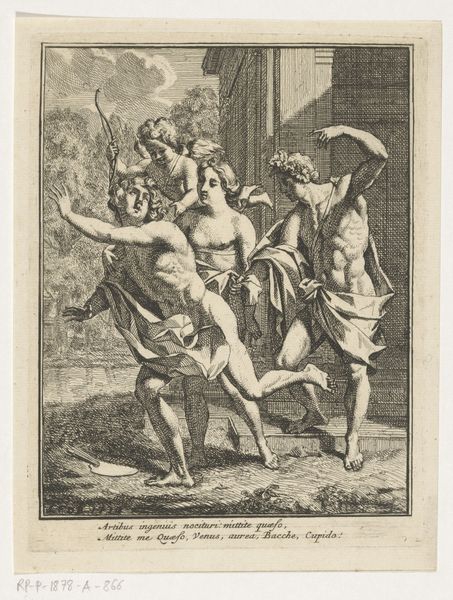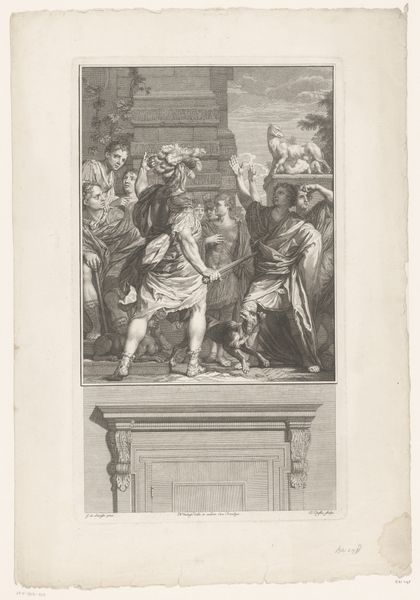
print, engraving
#
pencil drawn
#
baroque
# print
#
old engraving style
#
figuration
#
genre-painting
#
history-painting
#
engraving
Dimensions: height 350 mm, width 215 mm
Copyright: Rijks Museum: Open Domain
Louis Surugue created this print, "Joseph and Potiphar's Wife," which is based on the Old Testament story, sometime between 1686 and 1762. It depicts a scene of sexual harassment. Prints like this one, often circulated amongst the bourgeoisie, served as moral lessons. They reinforced gendered and class expectations: men should be virtuous and women chaste. Yet, I wonder what happens when we see this image with contemporary eyes? Can we see, for instance, how the story of Joseph and Potiphar's wife, becomes a story about power, race, and class? As a Black woman, Potiphar’s wife was in a precarious position in a white, patriarchal society. What does it mean that it is her word against Joseph's? Do we read this as a story of moral fortitude on behalf of Joseph, or a story of the vulnerability of women, particularly Black women, in the 17th and 18th centuries?
Comments
No comments
Be the first to comment and join the conversation on the ultimate creative platform.
